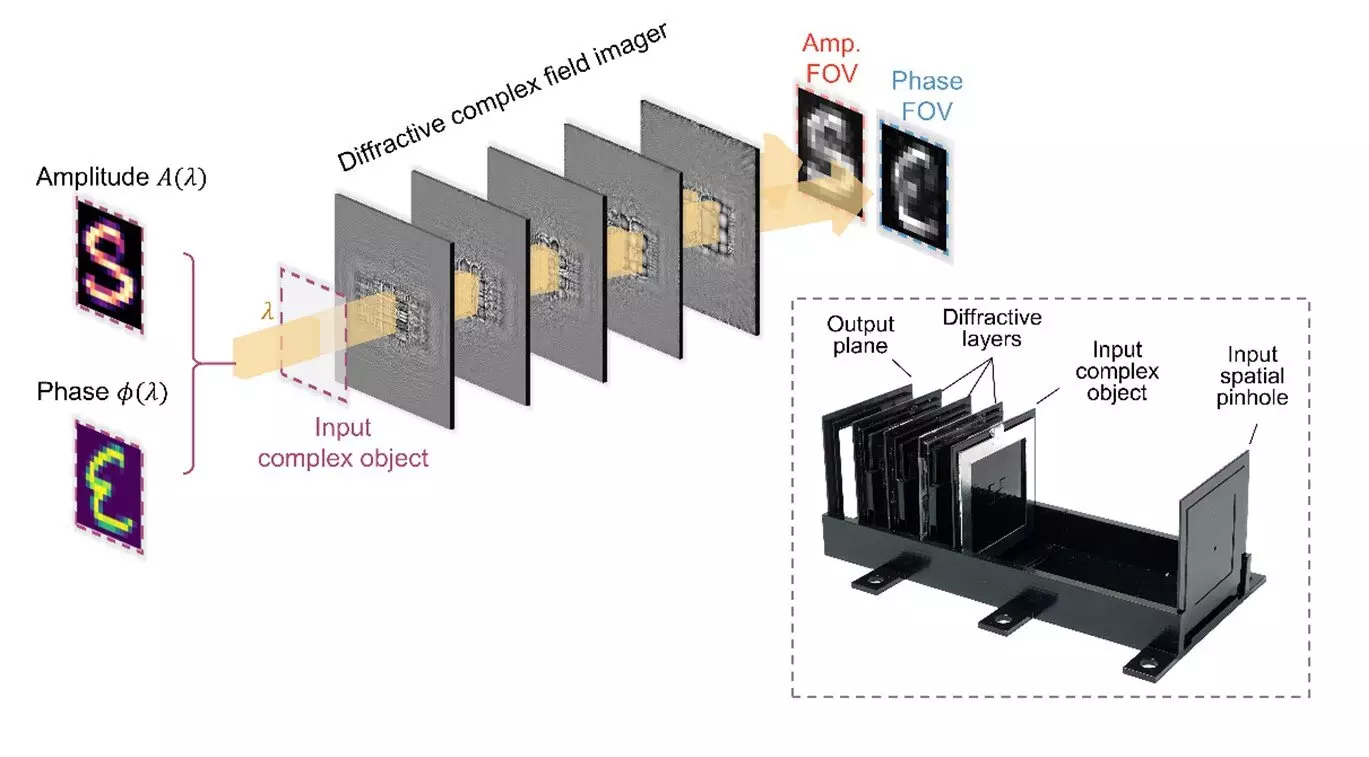The researchers at the University of California, Los Angeles (UCLA) have made a remarkable advancement in optical imaging technology with the development of a new all-optical complex field imager. This cutting-edge device is capable of capturing both the amplitude and phase information of optical fields without the need for digital processing. This breakthrough innovation has the potential to revolutionize various industries including biomedical imaging, security, sensing, and material science.
Unlike traditional optical imaging technologies that rely on intensity-based sensors which can only capture the amplitude of light, this new complex field imager developed by Professor Aydogan Ozcan and his team at UCLA eliminates the need for complex digital reconstruction algorithms. The device uses deep learning-optimized diffractive surfaces to modulate incoming complex fields, creating two independent imaging channels that transform the amplitude and phase of the input fields into intensity distributions on the sensor plane. This simplifies the imaging process significantly by directly measuring the amplitude and phase profiles of input complex fields, without the need for iterative phase retrieval algorithms.
The complex field imager is designed with spatially engineered diffractive surfaces arranged to perform amplitude-to-amplitude and phase-to-intensity transformations. Despite its sophisticated functionality, the imager’s compact optical design spans approximately 100 wavelengths axially, making it highly integrable into existing optical systems. Experimental results with 3D-printed prototypes operating in the terahertz spectrum demonstrated a high degree of accuracy, with the output amplitude and phase channel images closely matching numerical simulations.
The implications of this breakthrough in complex field imaging technology are vast. In the biomedical field, the imager can be utilized for real-time, non-invasive imaging of tissues and cells, offering critical insights during medical procedures. Its compact and efficient design makes it suitable for integration into endoscopic devices and miniature microscopes, potentially advancing point-of-care diagnostics and intraoperative imaging.
In environmental monitoring, the complex field imager can enable the development of portable lab-on-a-chip sensors for rapid detection of microorganisms and pollutants. Its portability and ease of use make it an ideal tool for on-site quantitative analysis, streamlining the process of environmental assessment. Moreover, in industrial settings, the imager’s ability to capture detailed structural information without the need for bulky equipment or extensive computational resources makes it a valuable asset in quality control and material analysis.
The development of the all-optical complex field imager represents a significant leap forward in optical imaging technology. By allowing the direct capture of both amplitude and phase information without digital processing, this cutting-edge technology simplifies the imaging process and expands the potential applications across various fields. As the research team at UCLA continues to refine and expand upon their designs, the impact of this innovation is expected to grow, offering new opportunities for scientific research and practical applications in the future.


Leave a Reply